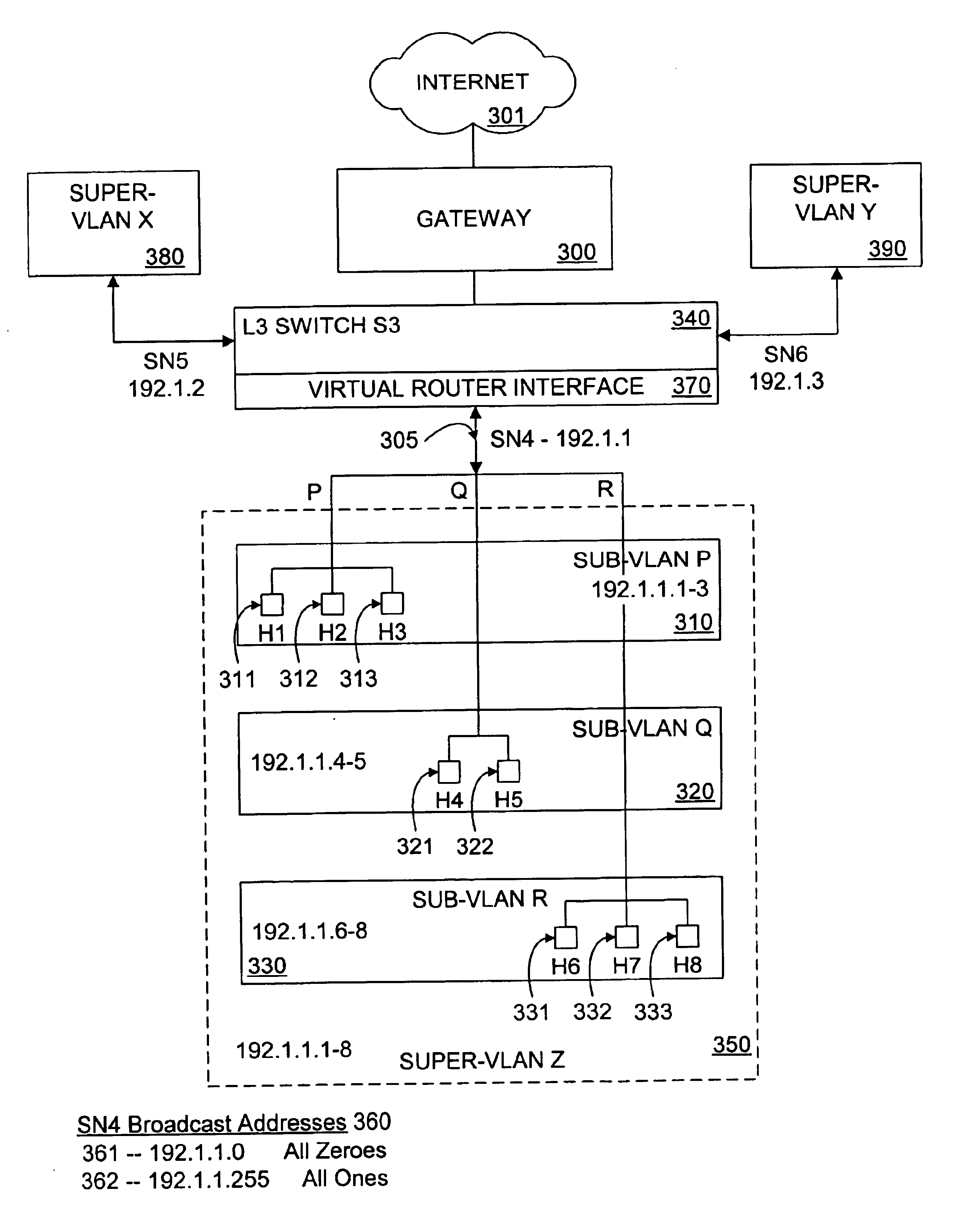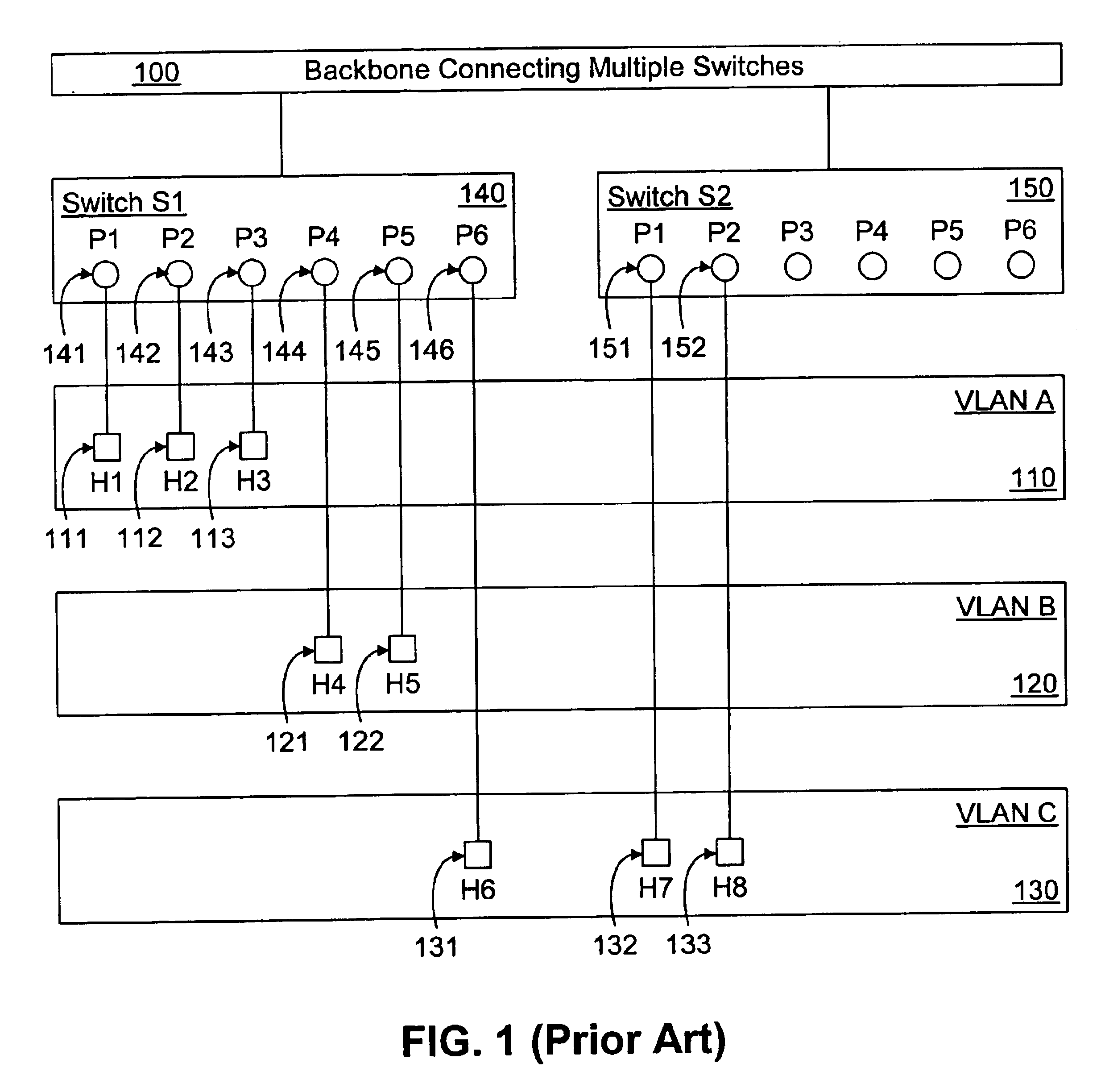Method and system for VLAN aggregation
a technology of virtual local area networks and aggregation, applied in the field of virtual local area network topologies and internetwork communication technologies, can solve the problems of inefficient and unnecessary use of the limited number of unique networks, the increase of the global routing table needed to properly route data packets, and the overhead of ip address space of subnets. large,
- Summary
- Abstract
- Description
- Claims
- Application Information
AI Technical Summary
Benefits of technology
Problems solved by technology
Method used
Image
Examples
Embodiment Construction
[0029]In the following description various aspects of the present invention, a VLAN aggregation method and system, will be described. Specific details will be set forth in order to provide a thorough understanding of the present invention. However, it will be apparent to those skilled in the art that the present invention may be practiced with only some or all of the described aspects of the present invention, and with or without some or all of the specific details. In some instances, well known architectures, steps, and techniques have not been shown to avoid unnecessarily obscuring the present invention. For example, specific details are not provided as to whether the method and system is implemented in a router, server or gateway, as a software routine, hardware circuit, firmware, or a combination thereof.
[0030]Various operations will be described as multiple discrete steps performed in turn in a manner that is most helpful in understanding the present invention. However, the ord...
PUM
 Login to View More
Login to View More Abstract
Description
Claims
Application Information
 Login to View More
Login to View More - R&D
- Intellectual Property
- Life Sciences
- Materials
- Tech Scout
- Unparalleled Data Quality
- Higher Quality Content
- 60% Fewer Hallucinations
Browse by: Latest US Patents, China's latest patents, Technical Efficacy Thesaurus, Application Domain, Technology Topic, Popular Technical Reports.
© 2025 PatSnap. All rights reserved.Legal|Privacy policy|Modern Slavery Act Transparency Statement|Sitemap|About US| Contact US: help@patsnap.com



